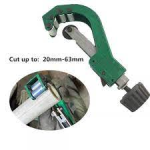I thought I've seen it all but this one is a new one for me and I have absolutely no idea how to produce this feature.
They call it a "notch" but it is a raised feature extending axially down the length of a shaft and terminates at a shoulder.
My initial thought was some type of specialty knurl but I don't see how you could get it to track properly with only 4 notches.
This is a current production part so someone somewhere knows how to make this. Anyone got any ideas?

They call it a "notch" but it is a raised feature extending axially down the length of a shaft and terminates at a shoulder.
My initial thought was some type of specialty knurl but I don't see how you could get it to track properly with only 4 notches.
This is a current production part so someone somewhere knows how to make this. Anyone got any ideas?




